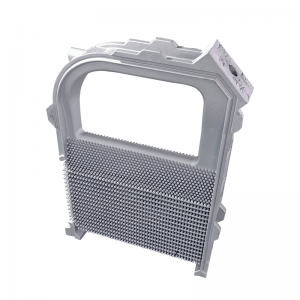ታኅሣ . 11, 2024 09:13 Back to list
Aluminum-Magnesium Alloy Castings and Their Benefits in Modern Manufacturing Applications
The Advantages and Applications of Aluminum-Magnesium Alloy Casting
Aluminum-magnesium alloys represent a unique blend of properties that make them exceptionally suited for various casting applications. These alloys, commonly referred to by their series numbers such as 5xxx, are celebrated for their lightweight nature, corrosion resistance, and excellent mechanical properties. In this article, we will explore the benefits of aluminum-magnesium alloy casting and its diverse applications across industries.
Composition and Properties
Aluminum-magnesium alloys primarily consist of aluminum with magnesium content typically ranging from 3% to 6%. This composition imparts several beneficial properties to the material
1. Lightweight One of the most significant advantages of aluminum is its low density. When combined with magnesium, not only does this alloy remain lightweight, but it also retains strength, making it preferable for applications where weight is a critical factor.
2. Corrosion Resistance The addition of magnesium enhances the corrosion resistance of aluminum. This property is crucial for applications exposed to harsh environments, such as marine and automotive industries, where components are often subjected to moisture and corrosive elements.
3. Excellent Weldability Aluminum-magnesium alloys exhibit good weldability compared to other aluminum alloys. This feature allows for the seamless integration of components in manufacturing processes, reducing the need for additional fasteners or joints.
4. Enhanced Strength The magnesium content contributes to improved tensile and yield strength, particularly in the heat-treated forms of the alloy. This quality makes aluminum-magnesium casting ideal for structural applications that require robust materials.
5. Good Formability The alloy's formability enables manufacturers to produce intricate shapes through casting, allowing for complex designs while maintaining integrity and performance.
Casting Techniques
Aluminum-magnesium alloy casting can be performed using various methods, each offering specific advantages depending on the desired end product
1. Die Casting This high-pressure casting method is prevalent for producing precise and complex shapes with excellent surface finishes. Die casting is ideal for mass production of components used in automotive parts, appliances, and consumer electronics.
aluminum-magnesium alloy casting

2. Sand Casting Sand casting allows for larger and more intricate parts to be produced. This method is suitable for low to medium production volumes and is often used in applications like marine components, tooling, and architectural elements.
3. Investment Casting Also known as lost-wax casting, this technique allows for high precision and fine detail in smaller components. Investment casting is often utilized in aerospace and medical applications where intricate designs and high-quality finishes are paramount.
Applications in Industry
The versatility of aluminum-magnesium alloy castings allows them to be employed across various sectors
1. Automotive Industry Given the ongoing push for fuel efficiency and reduced emissions, aluminum-magnesium castings are increasingly used in vehicle manufacturing. Components such as engine blocks, transmission cases, and wheels benefit from the alloy's lightweight and strong characteristics, contributing to overall vehicle performance and efficiency.
2. Marine Industry The alloy's superb resistance to corrosion makes it an ideal choice for marine applications. Components like boat hulls, fittings, and engine components rely on aluminum-magnesium alloys to withstand harsh sea conditions.
3. Aerospace In the aerospace sector, weight savings directly contributes to performance and fuel efficiency. Aluminum-magnesium castings are utilized in structural parts, brackets, and housings where combining lightness with strength is vital.
4. Consumer Goods From lightweight cookware to bicycle frames, the practical properties of these alloys make them popular in many consumer products. The aesthetic appeal and durability also enhance their marketability.
5. Industrial Applications In machinery, equipment, and tooling, the strength and versatility of aluminum-magnesium alloys facilitate their use in various components that require high performance in demanding environments.
Conclusion
Aluminum-magnesium alloy casting embodies a balance of lightweight nature, corrosion resistance, and versatility, making it an invaluable resource in modern manufacturing. From automotive to aerospace, its applications are diverse, catering to industries that prioritize performance, efficiency, and durability. As technology and engineering continue to advance, the role of aluminum-magnesium alloy castings is poised to grow, reinforcing their importance in an evolving industrial landscape.
-
Durable Cast Steel Concrete Pipe Mold Bottom Rings & Base Trays
NewsAug.23,2025
-
Centrifugally Cast Iron Water Main Pipe for Reliable Mains
NewsAug.22,2025
-
Durable Centrifugally Cast Iron Water Main Pipe
NewsAug.11,2025
-
Centrifugally Cast Iron Water Main Pipes for Reliability
NewsAug.10,2025
-
High-Quality Centrifugally Cast Iron Water Main Pipes
NewsAug.09,2025
-
Durable Cast Iron Water Main Pipe & Drainage Solutions
NewsAug.08,2025


